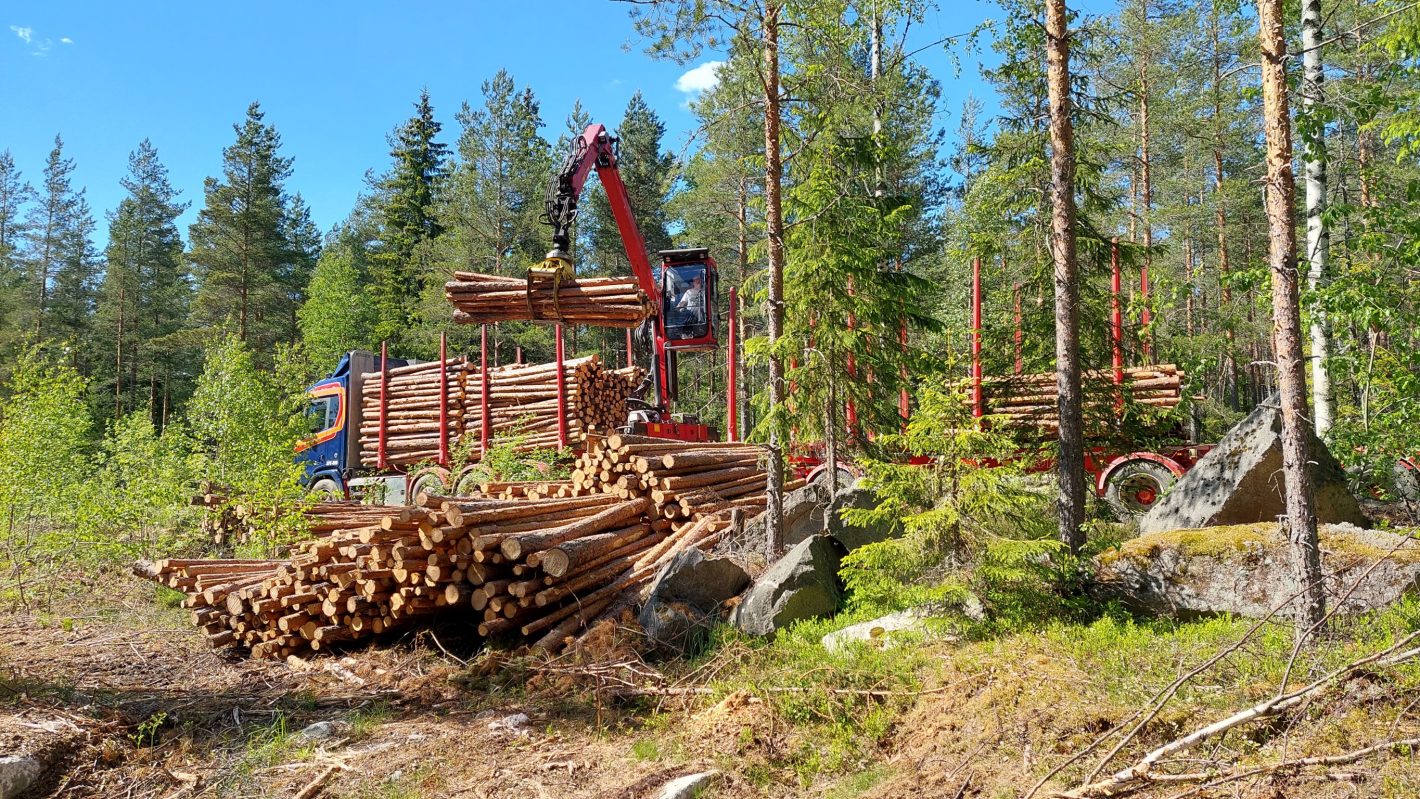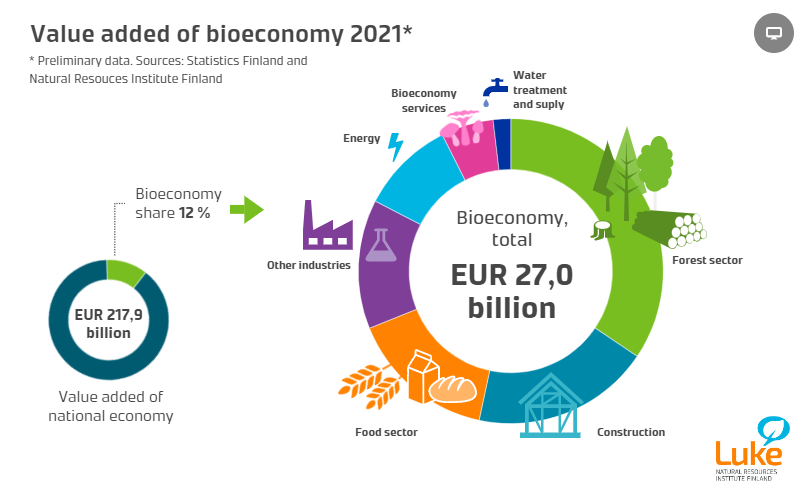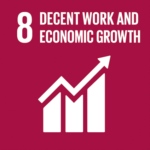Sawn goods export prices boost value added in the forest sector

Case - Published 21.12.2022
Finland’s bioeconomy is strongly based on forests. Last year, the forest sector’s share increased to 35 per cent of total bioeconomy output and value added. The number of people employed in the bioeconomy almost returned to the pre-COVID-19 pandemic level.
The output of the bioeconomy was €78.7 billion last year. It increased by three per cent compared to the previous year, reports the Natural Resources Institute Finland (Luke).
The value added of the bioeconomy was €27 billion, down one per cent from the previous year. Almost all sectors of the bioeconomy declined. The forestry and energy sectors were an exception, as value added increased in these sectors.
Output refers to the value of products manufactured during the year. There are three types of output: market output, output for own final use, and other non-market output. The bioeconomy calculations do not include non-market output.
Subtracting production services from the output of the goods gives added value.
In Finland, the bioeconomy accounts for 17 per cent of output and 12 per cent of value added in the national economy. These shares have remained almost unchanged for the last ten years.

Huge value added in the wood products industry
In the forestry sector, value added increased by ten per cent compared to the previous year. The forest sector comprises forestry, wood products, and the pulp and paper industry.
In the wood products industry, value added was up to 55 per cent on the previous year, which is exceptional, according to Luke. The sharp rise in the export prices of sawn goods largely explains the increase.
In the pulp and paper industry, value added grew more moderately, a total of nine per cent.
“The forest sector accounted for 35 per cent of total value added in the bioeconomy, and its share has not changed significantly in recent years,” says Tiina Sauvula-Seppälä, Senior Statistician at Luke.
Substantial decline in the food sector
Last year, the food sector accounted for 16 per cent of value added in the bioeconomy. Value added fell by two percentage points from the previous year, which is 15 per cent in real terms.
The food sector is mainly composed of agriculture and the food industry.
The agricultural sector was hit by, among other things, a poor cereal harvest in 2021. Value added in agriculture was a quarter lower than in the previous year.
The number of people employed decreased most in agriculture
Last year, the bioeconomy employed 302 800 people or 11 per cent of the employed population.
Although the number of people employed in the bioeconomy increased by 4 100 compared to the previous year, the growth rate was slower than in the national economy as a whole.
Agriculture is still the largest employer in the bioeconomy with 64 700 people, although the number of people employed has steadily decreased. The number of people employed also decreased in the pulp and paper industry. However, the number of people employed in other sectors of the bioeconomy increased.
Bioeconomy services employed 34 400 people last year, nine per cent fewer than before the COVID-19 pandemic.
The most significant increases in the number of people employed last year were in the food industry, wood products, construction and bioeconomy services. These sectors employed a total of 5000 people.
Read the original news story and see more on Luke’s website.
The author of the article is Heli Virtanen, Editor of biotalous.fi, Tapio, heli.virtanen(at)tapio.fi.


